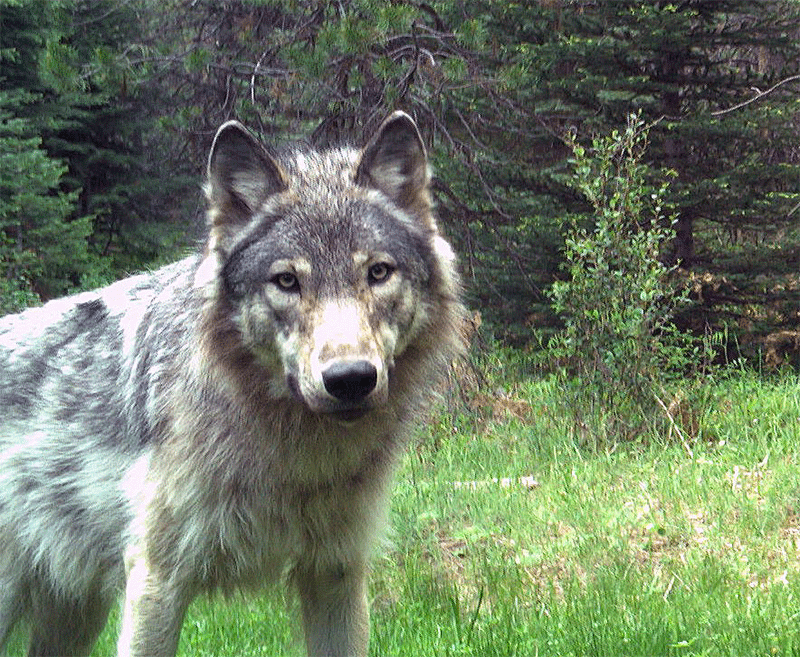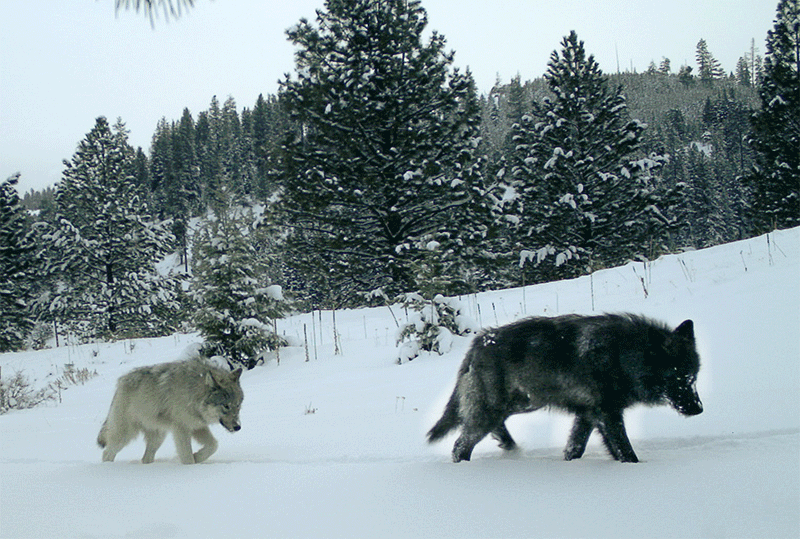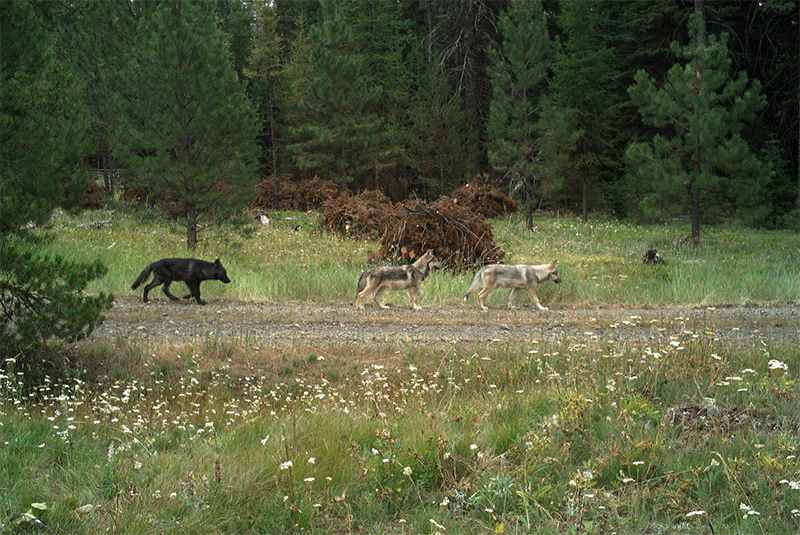The plot thickens around the killing of an 85-pound wolf near Cooperstown in December of 2021 and the response by the Department of Environmental Conservation (DEC). Under state and federal law, a wolf that wanders into New York State is protected under the Endangered Species Act. The wolf shot near Cooperstown by a coyote hunter clearly enjoyed no such protections.
On September 15th, 38 groups signed a letter to DEC Commissioner Basil Seggos “to take immediate action to increase protections for wolves potentially dispersing through and recolonizing the Northeast, including the state of New York.” This letter shows that there is wide consensus among environmental organizations and wildlife advocates that the DEC botched its response to the killing of the Cooperstown wolf and needs to do much more to protect wolves that come into New York.
New York State administers a 6-month-long open hunting season on coyotes. This year it runs from October 1, 2022 to March 26, 2023. Coyotes can be trapped or shot. There is no limit on the number of coyotes a hunter can kill in a day or a season. This part of New York State’s hunting laws would fit right in with the Idaho Fish and Game Department. This program has long been controversial, but DEC says the program helps to somehow limit the coyote population and protect the state’s deer herd.
The problem with the DEC’s approach is that it is well established in the scientific literature that coyotes regulate their reproduction. If their population is under threat, coyotes produce more offspring. Higher hunting just produces more coyotes, which produces more coyote hunting, which produces more coyotes, and so it goes.
After social media posts of Cooperstown wolf were circulated among the hunting community, some of whom were wolf recovery activists, many features in the photographs of the dead 85-pound canid appeared to be wolf-like. The size of the animal, the size of its paws, the size of its head, its weight reported at over 80 pounds, and its color all pointed to a wolf, not simply a really big coyote.
The Northeast Ecological Recovery Society (NERS) contacted the hunter and asked if they could obtain a sample from the animal for a DNA test. There had been confirmed wolves in New York and the Northeast US in recent years, but this was one in real time. NERS contacted groups in its network, such as Protect the Adirondacks, about the incident. There was broad agreement to pursue a DNA test and Protect the Adirondacks paid for it. A sample was obtained over the winter and sent out for processing to the Natural Resources DNA Profiling & Forensic Centre in Ontario, Canada, a leading wildlife DNA testing facility.
The DNA analysis was completed in July 2022 and concluded that this animal was a combination of Great Lakes, Northwest Territory, and Eastern gray wolf genetic composition, all subspecies of Canis lupus. The report further concluded that the genetic makeup of the animal was approximately 98% Canis lupus. The report’s Executive Summary stated “The sample submitted yielded sufficient DNA to allow for genetic assignment among Canadian Canis categories in context of an in-house reference database. The sample was of an admixed nature predominated by Great Lakes wolf ancestry.”
After this report was released, DEC spokesperson, Lori Severino stated that in the DEC’s view this wolf was a coyote. Albany News 10 reported:
ALBANY, N.Y. (WTEN) – After a DNA test released Tuesday, July 26, confirmed that an animal shot last December in the Greater Capital Region was a gray wolf, the Department of Environmental Conservation (DEC) said otherwise. “Initial DNA analysis conducted determined the wild canid to be most closely identified as an eastern coyote,” said Lori Severino, a spokesperson for the DEC.
New York’s eastern coyote population, said Severino, has been shown to have a mix of coyote, wolf, and domestic dog genetics, as is the case with the DNA of this animal. DNA tests vary based on the method each lab is using and how results are interpreted by individual scientists, she said.
“As New York’s eastern coyote population has been shown to have a mix genetics, further testing is being conducted to provide more clarity of the genetic composition of this animal,” concluded the DEC spokesperson.
In July, the DEC did not provide any reports or evidence to support its assertion. Mike Lynch at the Adirondack Explorer has been on top of this story with two key articles, the first in July, and the second in September.
The coyote hunter who shot the Cooperstown wolf contacted the DEC right away. DEC took samples of the animal for a DNA study and told the hunter that the animal was a coyote. DEC has not released its DNA analysis, though it used these reports in the media, like the report above. Under Freedom of Information Act laws (FOIA) such research and analysis should be freely available to the public. Protect the Adirondacks promptly submitted a FOIA request for this report, as did news media outlets, and researchers and other organizations. Though this report is sitting on a desk or as PDF in a computer, or many computers, at the DEC, it has not been released. Stonewalling Freedom of Information requests hardly shows an agency that is open, transparent, and serving the public’s right to know. Commissioner Basil Seggos should intervene today and release the DEC’s DNA analysis on the Cooperstown wolf.
The DEC announced recently that it had sent out additional samples from the Cooperstown wolf to Princeton University for further DNA analysis. The groups monitoring this issue have done the same. The additional independent analyses should be completed by the end of the year.
There is concern that the DEC will use additional DNA testing to reach for novel ways to discredit the need to protect wolves by arguing that the wolf killed had been raised in captivity and escaped or was released. One test will be to examine tissue for radioisotopes. This inquiry allows researchers to assess the diet of the animal, thus looking for food that may have been commonly eaten during captivity versus food eaten in the wild. There are some problems with this approach. A wolf could kill a deer that ate a lot of corn, either found in fields or provided by people who feed deer. Wolves could eat other small mammals or rodents that forage in the backyards of human residences. Corn radioisotopes alone are hardly proof that an animal is captive or wild, but we should all expect to hear more about that in the months ahead.
Longstanding, viable wolf populations exist in Canada about 100 miles from the northern parts of Adirondack Park. Resident wolf populations in Alqonquin Park, about 250 miles away, regularly produce wolves that leave the Park and wander throughout eastern Canada. Wolves have been documented to wander far and wide. Though the trek is hazardous from Canada to the Adirondacks, winding through a maze of highways, intensely developed areas, and permissive hunting laws, wolves have been documented in the past making this journey to New York or other Northeast states.
The letter from 38 organizations to Commissioner Seggos called for four important actions by the DEC. First, it’s important, based on the scientific evidence, that the DEC acknowledges that the Cooperstown wolf was indeed a wolf and that other wolves, given nearby populations, could arrive in the state. Second, wolves should be kept on the NYS Endangered Species List and the DEC should enforce laws that prohibit their killing. 3) DEC needs to do more the educate coyote hunters about the presence of wolves. Research has long shown that the coyote population in New York is a hybrid with high percentages of wolf genes. 4) The DEC needs to do more to protect open spaces that are suitable for wolf reclamation and restoration.
The New York State “Wildlife Action Plan” was last updated in 2015. The plan is updated every 10 years. Past iterations of the plan called on the DEC to study the restoration of wolves, which never happened. The current plan does not include a focus on returning extirpated species. The plan states “DEC chose not to include extirpated large carnivore species as Species of Greatest Conservation Need in order to focus conservation resources on resident species that currently have a population at risk in New York.”
It’s safe to say that this story will continue to unfold in the months ahead.
UPDATE 1: The 2nd independent DNA analysis mentioned above is complete. The report concludes that the Cooperstown wolf “sample carries a combined 97.8% gray wolf (C. lupus) ancestry with nearly all of that derived from gray wolves of the Great Lake and only 1.4% identified as Eastern wolf (C. lycaon).”
Click here to read the new DNA analysis.
UPDATE 2: The NYS DEC released its DNA study (finally) on September 21st after a new report from Adirondack Explorer reporter Mike Lynch. Click here for the DEC’s DNA report. Click here for Lynch’s new article. Of the DEC DNA report, Lynch writes, it “determined the animal to be an eastern coyote, ‘a natural hybrid of wolves.’ It determined that the canid’s maternal lineage was 99.9 percent coyote. However, it found that the animal was 65.2% wolf and 34.8% coyote.” Based on this report that says the Cooperstown wolf was 65.2% wolf, the DEC says it was coyote.
(Pictures in this story courtesy of the Oregon Department of Fish and Wildlife.)








